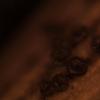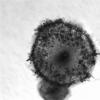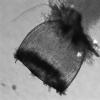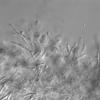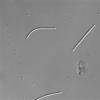
24-12-2025 17:08
Hulda Caroline HolteHello, I have found this propoloid ascomycete on

21-12-2025 09:32
Hello.A tiny ascomycete found embedded in wood in

21-12-2025 21:32
Pol DebaenstHello, Garden, Burgweg 19, Veurne, BelgiumOn 10/1

22-12-2025 23:38
Patrice TANCHAUDBonsoir, récolte sur un mur en pierre, apothéci

22-12-2025 00:47
Patrice TANCHAUDBonsoir, récolte à proximité du milieu dunaire
I have recently found a cupulate coelomycete on Pinus sylvetris (Scots Pine) needle litter
in Wales. It has conidiomata which are immersed at the base and are pale brown
and collapse on drying (50-250um wide), and occur in small groups or singularly.
The conidiomata are flat topped with an ostiole, and a ring of dematiaceous,
blunt, irregular, short 'hairs' around the rim. It produces narrow, cylindrical
phialidic, conidiogenous cells on septate, sometimes slightly swollen conidiophores.
Conidia are hyaline, narrowly cylindrical and non septate (approx. 19 x 1um).
I have had a look at most of literature on cupulate
coelos by Brian Sutton but my specimen does not correspond to anything that I have
looked at. David Minter said it's not Fujimyces, Linodochium hyalinum or L.
formosum, Lemalis aurea. It's not Pseudocenangium succineum. He has never seen
anything like it before or never come across anything like it in the literature,
unless it has been described recently.
Has anyone come across this before??
Thanks,
Jo
